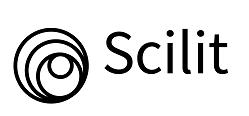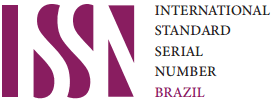Epidemiological analysis of children and adolescents with self-harm treated at a reference hospital in Santa Catarina in the years 2018-2021
DOI:
https://doi.org/10.25118/2763-9037.2023.v13.424Keywords:
self-injurious behavior, child, adolescent, self-injuryAbstract
Objective: to analyze the medical records of children and adolescents treated for self-injury in a hospital in Santa Catarina between 2018 and 2021. Method: epidemiological, observational, descriptive research, with retrospective data collection conducted in a hospital located in Santa Catarina. We analyzed 187 medical records of 0 to 15 incomplete years of age seen in the emergency department, outpatient clinic and who were hospitalized for provoked self-injury. Results were analyzed using IBM SPSS® software. Results: 79.1% of the cases were female and 95.7% were in the adolescent age group. correlation of diagnoses associated with self-injury showed interpersonal conflict (Z63), depressive disorders (F33) and anxiety disorders (F41) as the main factors promoting self-injury. Conclusions: the epidemiological profile of the patients seen was a white teenager, 13 to 15 years old, daughter of divorced parents, experiencing interpersonal conflicts, prone to self-injury through intoxication or sharp objects.
Downloads
Metrics
References
Krug EG, Dahlberg LL, Mercy JA, Zwi AB, Lozano R, editores. Relatório mundial sobre violência e saúde. Geneva: World Health Organization; 2002. Capítulo 5, Abuso de idosos; p. 123-44. https://opas.org.br/wp-content/uploads/2015/09/relatorio-mundial-violencia-saude-1.pdf
American Psychiatric Association. Diagnostic and statistical manual of mental disorders: DSM-5. 5th ed. Washington: American Psychiatric Association; 2013. https://doi.org/10.1176/appi.books.9780890425596
Bresin K, Schoenleber M. Gender differences in the prevalence of nonsuicidal self-injury: a meta-analysis. Clin Psychol Rev. 2015;38:55-64. https://doi.org/10.1016/j.cpr.2015.02.009 PMID:25795294
Gabriel IM, Costa LCR, Campeiz AB, Salim NR, Silva MAI, Carlos DM. Autolesão não suicida entre adolescentes: significados para profissionais da educação e da atenção básica à saúde. Esc Anna Nery Rev Enferm. 2020;24(4):e20200050. https://doi.org/10.1590/2177-9465-ean-2020-0050
Hawton K, Bergen H, Cooper J, Turnbull P, Waters K, Ness J, Kapur N. Suicide following self-harm: findings from the multicentre study of self-harm in England, 2000-2012. J Affect Disord. 2015;175:147-51. https://doi.org/10.1016/j.jad.2014.12.062 PMID:25617686
Carmo JS, Silveira PHFS, Vignardi RG, Canicoba GS, Mota ACMF, Miziara CSMG, Miziara ID. Autolesão não suicida na adolescência como fator de predisposição ao suicídio. Saúde Ética Justiça. 2020;25(1):3-9. https://doi.org/10.11606/issn.2317-2770.v25i1p3-9
Fonseca PHN, Silva AC, Araújo LMC, Botti NCL. Autolesão sem intenção suicida entre adolescentes. Arq Bras Psicol. 2018;70(3):246-58. http://pepsic.bvsalud.org/pdf/arbp/v70n3/17.pdf
Lloyd EE. Self-mutilation in a community sample of adolescents [dissertation]. [Louisiana]: Louisiana State University; 1997. 106 p. https://doi.org/10.31390/gradschool_disstheses.6546
Instituto Brasileiro de Geografia e Estatística. Censo 2010. Rio de Janeiro: Instituto Brasileiro de Geografia e Estatística; c2022. https://censo2010.ibge.gov.br/
Palacio-Ortiz JD, Londono-Herrera JP, Nanclares-Márquez A, Robledo-Rengifo P, Quintero-Cadavid CP. Psychiatric disorders in children and adolescents during the Covid-19 pandemic. Rev Colomb Psiquiatr (Engl Ed). 2020;49(4):279-88. https://doi.org/10.1016/j.rcpeng.2020.11.003 - PMID:33328021 PMCID:PMC7698655
Le Breton D. Escarificações na adolescência: uma abordagem antropológica. Horiz Antropol. 2010;16(33):25-40. https://doi.org/10.1590/S0104-71832010000100003
Di Lorenzo R, Frattini N, Dragone D, Farina R, Luisi F, Ferrari S, Bandiera G, Rovesti S, Ferri P. Psychiatric emergencies during the Covid-19 pandemic: a 6-month observational study. Neuropsychiatr Dis Treat. 2021;17:1763-78. https://doi.org/10.2147/NDT.S307128 PMID:34113107 - PMCID:PMC8184244
Melão S, Blanco LFO, Mounzer N, Veronezi CCD, Simões PWTA. Perfil epidemiológico dos pacientes com hanseníase no extremo sul de Santa Catarina, no período de 2001 a 2007. Rev Soc Bras Med Trop. 2011;44(1):79-84. https://doi.org/10.1590/s0037-86822011000100018 - PMID:21340414
Barroso SM, Bandeira M, Nascimento E. Sobrecarga de familiares de pacientes psiquiátricos atendidos na rede pública. Arch Clin Psychiatry. 2007;34(6):270-7. https://doi.org/10.1590/S0101-60832007000600003
Tardivo LSLPC, Rosa HR, Ferreira LS, Chaves G, Pinto Júnior AA. Autolesão em adolescentes, depressão e ansiedade: um estudo compreensivo. Bol Acad Paul Psicol. 2019;39(97):159-69. https://doi.org/10.5935/2176-3038.20190015
Ferreira LS, Chaves G, Tardivo LSLPC. Autolesão na adolescência e a produção científica nacional: revisão integrativa da literatura. Mudanças. 2021;29(2):43-53. https://doi.org/10.15603/2176-1019/mud.v29n2p43-53
Feitosa ME. Análise das notificações de abuso sexual de crianças e adolescentes em Santa Catarina de 2009 a 2018: abuso sexual de crianças e adolescentes [monografia]. [Florianópolis]: Universidade Federal de Santa Catarina; 2019. 29 p. https://repositorio.ufsc.br/bitstream/handle/123456789/203398/TCC.pdf?sequence=1
Racine N, McArthur BA, Cooke JE, Eirich R, Zhu J, Madigan S. Global prevalence of depressive and anxiety symptoms in children and adolescents during Covid-19: a meta-analysis. JAMA Pediatr. 2021;175(11):1142-50. https://doi.org/10.1001/jamapediatrics.2021.2482 PMID:34369987 PMCID:PMC8353576
Felipe AOB, Resck ZMR, Bressan VR, Vilela SC, Fava SMCL, Moreira DS. Autolesão não suicida em adolescentes: terapia comunitária integrativa como estratégia de partilha e de enfrentamento. SMAD Rev Eletrônica Saúde Mental Alcool Drog. 2020;16(4):75-84. https://doi.org/10.11606/issn.1806-6976.smad.2020.155736

Downloads
Published
How to Cite
Issue
Section
License
Copyright (c) 2023 Antônio Edervaldo Pereira Sousa, André Coelho Haviaras, Emanuela Rocha Carvalho

This work is licensed under a Creative Commons Attribution-NonCommercial 4.0 International License.
Debates em Psiquiatria allows the author (s) to keep their copyrights unrestricted. Allows the author (s) to retain their publication rights without restriction. Authors should ensure that the article is an original work without fabrication, fraud or plagiarism; does not infringe any copyright or right of ownership of any third party. Authors should also ensure that each one complies with the authorship requirements as recommended by the ICMJE and understand that if the article or part of it is flawed or fraudulent, each author shares responsibility.
Attribution-NonCommercial 4.0 International (CC BY-NC 4.0) - Debates em Psiquiatria is governed by the licencse CC-By-NC
You are free to:
- Share — copy and redistribute the material in any medium or format
- Adapt — remix, transform, and build upon the material
The licensor cannot revoke these freedoms as long as you follow the license terms. Under the following terms:
- Attribution — You must give appropriate credit, provide a link to the license, and indicate if changes were made. You may do so in any reasonable manner, but not in any way that suggests the licensor endorses you or your use.
- NonCommercial — You may not use the material for commercial purposes.
No additional restrictions — You may not apply legal terms or technological measures that legally restrict others from doing anything the license permits.





























